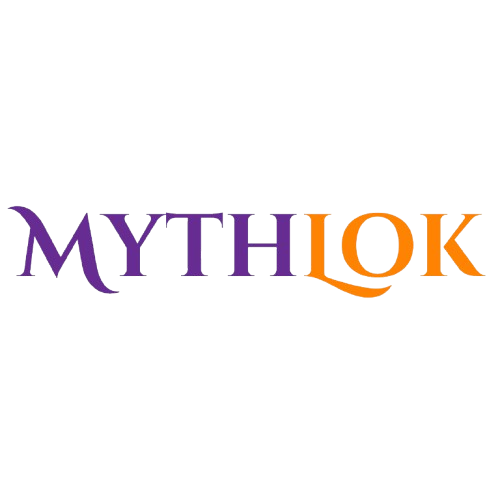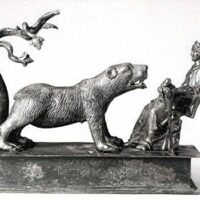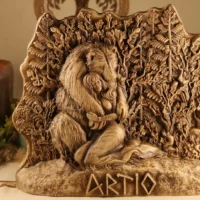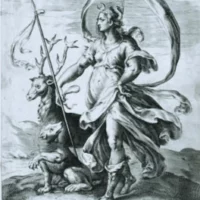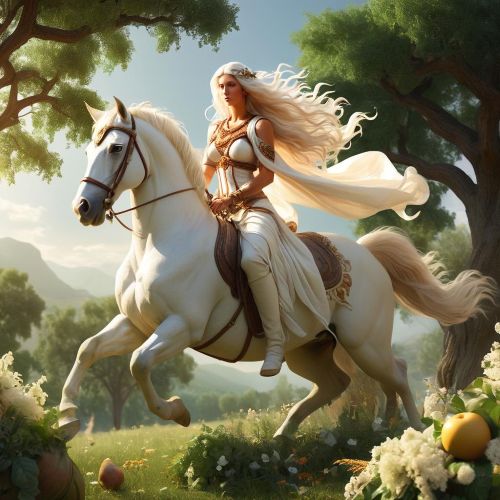Artio : The Bear Goddess
Listen
At a glance
| Description | |
|---|---|
| Origin | Gaulish Mythology |
| Classification | Gods |
| Family Members | N/A |
| Region | Switzerland, Germany France |
| Associated With | Wildlife, Forests |
Artio
Introduction
Artio, a revered figure in Gaulish mythology, stands out as a powerful goddess linked closely with nature, wildlife, and transformation. Her name comes from the ancient Gaulish word for “bear,” highlighting her deep-rooted association with this majestic animal. Honored especially by the Helvetii tribe in what is now Switzerland, Artio represents the intimate connection between early European tribes and the natural world around them. Inscriptions and artifacts, some dating back to the 2nd century BCE, provide glimpses into the spiritual importance she held for the Celtic people.
Physical Traits
Rather than being portrayed in human form, Artio is usually represented symbolically through the figure of a bear—an animal known for its strength and maternal instincts. One of the most striking depictions of her is a Roman-era statue found in Bern, Switzerland, showing her calmly seated as she offers food to a bear. This image captures her nurturing essence and protective nature. Other artworks often incorporate forest elements, reinforcing her role as a guardian of the wild.
Family
Little concrete information survives about Artio’s divine relatives, and Gaulish mythology doesn’t offer a clear genealogy for her. However, the idea of interconnected deities was common in Celtic traditions. She may have shared thematic or symbolic links with other nature goddesses like Arduinna of the Ardennes forest. There’s also speculation she was connected to Artaius—a Gallic god the Romans associated with Mercury—suggesting a possible complementary role or shared origin.
Other names
While Artio remains the name most directly associated with this goddess, some scholars have noted potential overlaps with similar deities like Artaius. Though not definitively the same figure, their shared bear symbolism and nature themes suggest at least a cultural or mythological kinship. The lack of widespread alternate titles for Artio underscores her distinct identity within the Gaulish pantheon.
Powers and Abilities
Artio’s influence centers on the natural world—particularly animals, forests, and cycles of growth. She was believed to safeguard wildlife, bless fertile lands, and guide spiritual transformation. Her bear connection speaks to inner strength, maternal care, and the capacity for change. Though myths detailing her powers are scarce, it’s likely that followers saw her as a protective presence—one who offered both physical safety and emotional resilience.
Modern Day Influence
Though her active worship faded with the rise of Christianity, Artio’s symbolic power has endured. The bear remains a strong motif in European folklore and heraldry, echoing the qualities once attributed to her. Today, she’s often embraced by those drawn to Celtic spirituality, neopaganism, and eco-conscious practices. Artistic representations of Artio, especially the Bern statue, continue to inspire modern interpretations in museums, literature, and cultural projects. Her name even surfaces in contemporary branding and events, proving that her legacy, much like the bear itself, still roams the edges of our collective memory.
Related Images
Source
Krzysztof Tomasz Witczak, “Gaulish SUIOREBE ‘with two sisters’,” The Poznań Society for the Advancement of the Arts and Sciences, 2015, pp. 59-62.
G. E. Moore, Ethics, 1974. Philosophical reflections on powers and abilities, helpful for contextualizing divine attributes.
J. Whatmough, “Continental Celtic,” Proceedings of the International Congress of Celtic Studies, 1963. Foundational work on Gaulish language and culture.
Green, Miranda. Celtic Goddesses: Warriors, Virgins, and Mothers. Routledge, 1995.
Frequently Asked Questions
What is lorem Ipsum?
I am text block. Click edit button to change this text. Lorem ipsum dolor sit amet, consectetur adipiscing elit. Ut elit tellus, luctus nec ullamcorper mattis, pulvinar dapibus leo.
What is lorem Ipsum?
I am text block. Click edit button to change this text. Lorem ipsum dolor sit amet, consectetur adipiscing elit. Ut elit tellus, luctus nec ullamcorper mattis, pulvinar dapibus leo.
What is lorem Ipsum?
I am text block. Click edit button to change this text. Lorem ipsum dolor sit amet, consectetur adipiscing elit. Ut elit tellus, luctus nec ullamcorper mattis, pulvinar dapibus leo.
What is lorem Ipsum?
I am text block. Click edit button to change this text. Lorem ipsum dolor sit amet, consectetur adipiscing elit. Ut elit tellus, luctus nec ullamcorper mattis, pulvinar dapibus leo.
What is lorem Ipsum?
I am text block. Click edit button to change this text. Lorem ipsum dolor sit amet, consectetur adipiscing elit. Ut elit tellus, luctus nec ullamcorper mattis, pulvinar dapibus leo.

